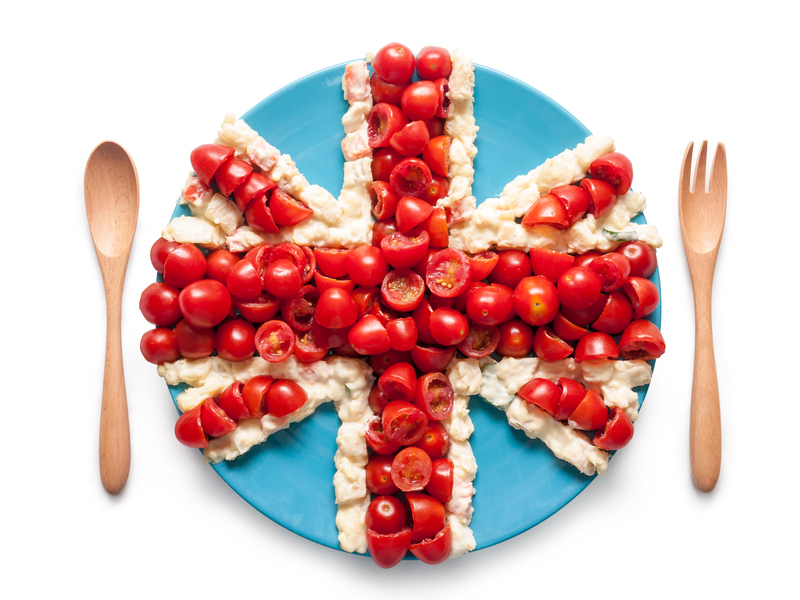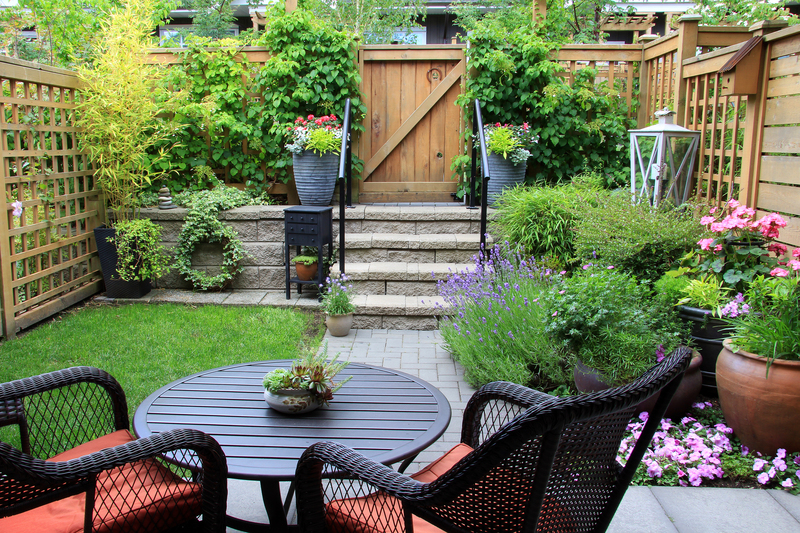Unleashing Creativity with a Kids' Interactive Garden
Posted on 03/06/2025
Unleashing Creativity with a Kids' Interactive Garden
Unlocking imagination and fostering life skills in children starts in the garden. An interactive garden designed for kids is not only a place to grow plants, but also a living, breathing canvas for young minds to explore, play, and learn. In this comprehensive guide, we'll dive deep into how a kids' interactive garden can lead to richer creativity, greater curiosity, and lifelong environmental appreciation.

Why Choose a Kids' Interactive Garden?
Interactive gardening for kids is more than just planting seeds. It's an engaging process that combines hands-on experience, sensory learning, and outdoor adventure. By giving children their own miniature green space, you provide them with a unique opportunity to unlock creativity through experimentation and exploration.
- Hands-On Learning: Children understand concepts better when they actively participate.
- Boosts Creativity: The vibrant colors, textures, and scents invite artistic inspiration.
- Encourages Problem Solving: Kids observe, learn, and adapt to gardening challenges.
- Teaches Patience: Waiting for sprouts to appear instills anticipation and perseverance.
- Improves Responsibility: Daily care routines help children develop discipline.
In essence, a kids' interactive garden is a multi-sensory playground for both the body and mind.
Designing a Creative Garden for Kids
Before the first seed is planted, effective planning is crucial. By tailoring the garden to children's interests and abilities, you ensure both safety and maximum engagement.
Key Elements of a Kids' Interactive Garden
- Raised Beds and Containers: These make gardening accessible and allow kids to take ownership of their plot.
- Colorful Theming: Use bright markers, whimsically painted stones, or themed sections (like a fairy garden or dinosaur dig site).
- Paths and Hiding Spots: Winding paths, arches, and kid-sized nooks invite exploration and imaginative play.
- Water Features: Small fountains or sensory water tables make the space interactive and playful.
- Sensory Stations: Areas filled with fragrant herbs, textured plants, or wind chimes stimulate every sense.
Involve kids in the design process. Allowing them to choose plants, colors, and decorations boosts their sense of pride and ownership over their interactive gardening experience.
Safety First!
- Non-toxic, child-safe plants and materials are a must.
- Paths should be smooth, and sharp tools replaced with kid-friendly gardening kits.
- Establish clear play and planting boundaries to keep the space organized and secure.
Unleashing Artistic Potential in the Garden
Garden Art Projects for Kids
Let the garden transform into an open-air art studio.
- Pebble Painting: Encourage painting rocks for pathway mosaics or plant markers.
- DIY Wind Chimes: String together old spoons or shells to create music in the breeze.
- Stepping Stones: Craft personalized steps using cement and colorful tiles or marbles.
- Upcycled Planters: Decorate old boots, cans, or boxes for quirky plant containers.
- Naturally Dyed Fabrics: Use flower petals and leaves for eco-friendly tie-dye.
These creative activities not only beautify the garden but allow children to proudly display their handiwork, strengthening their emotional connection to the space.
Encouraging Observation and Journaling
Give every child a garden journal for drawing, coloring, and writing about what they notice each week. They can track:
- Plant growth and weather changes
- Insect and bird visitors
- Creative stories about their favorite plants ("What if this tomato was magic?")
Journaling boosts literacy, scientific thinking, and artistic expression--all key skills for a creative mind.
The STEM Connection: Learning through Gardening
Did you know that a kids' interactive garden is an amazing springboard for science, technology, engineering, and math learning (STEM)?
Scientific Discovery
- Exploring the plant life cycle: from seed, sprout, bloom, to fruit.
- Conducting simple experiments: "Do plants grow better in sun or shade?"
- Understanding pollination, composting, and the water cycle.
Engineering Fun
- Building tiny bug hotels or bird feeders.
- Designing irrigation channels for their vegetable patch.
Math in the Garden
- Measuring plant height and rainfall with simple tools.
- Counting seeds, flowers, and garden visitors for counting and sorting practice.
- Arranging plots in geometric patterns to understand shapes and spatial relationships.
An interactive garden for children is not just a creative outlet, but a living science lab.
Planting Ideas for a Kids' Interactive Garden
Choosing the right plants keeps children invested and ensures gardening success. Opt for easy, fast-growing, and sensory-rich plants that kids can easily touch, observe, and snack on.
- Sunflowers: Towering, cheerful, and fast-growing--perfect for sunflower houses or mazes.
- Sugar Snap Peas & Cherry Tomatoes: Edible, sweet, and rewarding.
- Mint & Lavender: Fragrant and resilient for sensory play.
- Zinnias & Marigolds: Colorful blooms that attract pollinators.
- Lamb's Ear: Velvet-soft leaves are fun for sensory touch.
- Strawberries: Compact, easy, and delicious when picked straight from the plant.
Creating a Themed Interactive Garden
Stir the imagination by organizing plants into mini-ecosystems or themed corners:
- Pizza Garden: Grow basil, tomatoes, and peppers for homemade pizza toppings.
- Rainbow Garden: Plant flowers or veggies for every color of the rainbow.
- Senses Garden: Feature plants for smell, touch, taste, and sound (like rustling grasses).
Imaginative Play in the Garden
Let the garden become a backdrop for children's stories and games.
Inspiring Exploration & Adventure
- Build tiny fairy houses or dinosaur habitats among the plants.
- Let little chefs "cook" with harvested herbs and veggies in a mud kitchen.
- Host scavenger hunts: "Find a yellow flower, a bumpy leaf, and a buzzing bee!"
- Set up outdoor easels for painting nature scenes right in the garden.
- Have dramatic play with costumes--knights, fairies, or garden explorers!
The power of unstructured outdoor play is limitless in a kids' creative interactive garden.
Family and Community: Growing Together
Creating a children's interactive garden is also about building stronger relationships. Invite friends, siblings, or neighbors to join in:
- Start a family garden club and plan seasonal garden parties.
- Coordinate with local schools or libraries for garden-centered story times.
- Share harvested vegetables with neighbors or at local food pantries, teaching kids about generosity.
Community participation deepens meaning, making the gardening experience both personal and shared.
Year-Round Creativity in the Interactive Garden
The creative magic doesn't have to end with summer. Here's how to keep kids' interactive gardening alive all year:
- Autumn: Collect leaves for crafts, plant bulbs, dry flowers for arrangements.
- Winter: Design seed packet art, build bird feeders, plan next year's layout.
- Spring: Start seeds indoors, wake up worms, welcome pollinators.
- Summer: Host picnic parties, make garden-fresh treats, paint outdoor murals.
Each season brings new opportunities for discovery, storytelling, and connection.
Tips for a Thriving Kids' Interactive Garden
- Let kids make decisions: Ownership inspires care and innovation.
- Be patient: Mistakes happen, but learning is in the journey.
- Celebrate every harvest: Host little "garden parties" for each milestone.
- Document progress: Photos, journals, and art preserve memories and motivate further learning.
- Keep it playful: Remember that fun is the root of all creativity!

Frequently Asked Questions About Kids' Creative Gardens
Can a small space work for a children's interactive garden?
Absolutely! Even a windowsill, balcony, or section of the backyard can be transformed with containers, vertical gardens, or window boxes.
What if I don't have a green thumb?
Many plants suitable for children are incredibly resilient. Focus on easy starters (radishes, sunflowers, mint) and remember: The learning process matters more than perfect results!
How young can kids start interactive gardening?
With supervision, toddlers can help with watering, digging, and sensory play. As they grow, increase their responsibilities.
Conclusion: Nurturing Creativity and Curiosity
Unleashing creativity with a kids' interactive garden is a holistic adventure for the whole family. These gardens are more than just a collection of plants--they're living classrooms where imagination blooms, friendships grow, and knowledge takes root.
Ready to start your backyard masterpiece? Step outside, plant a seed, and watch a world of creativity grow!

